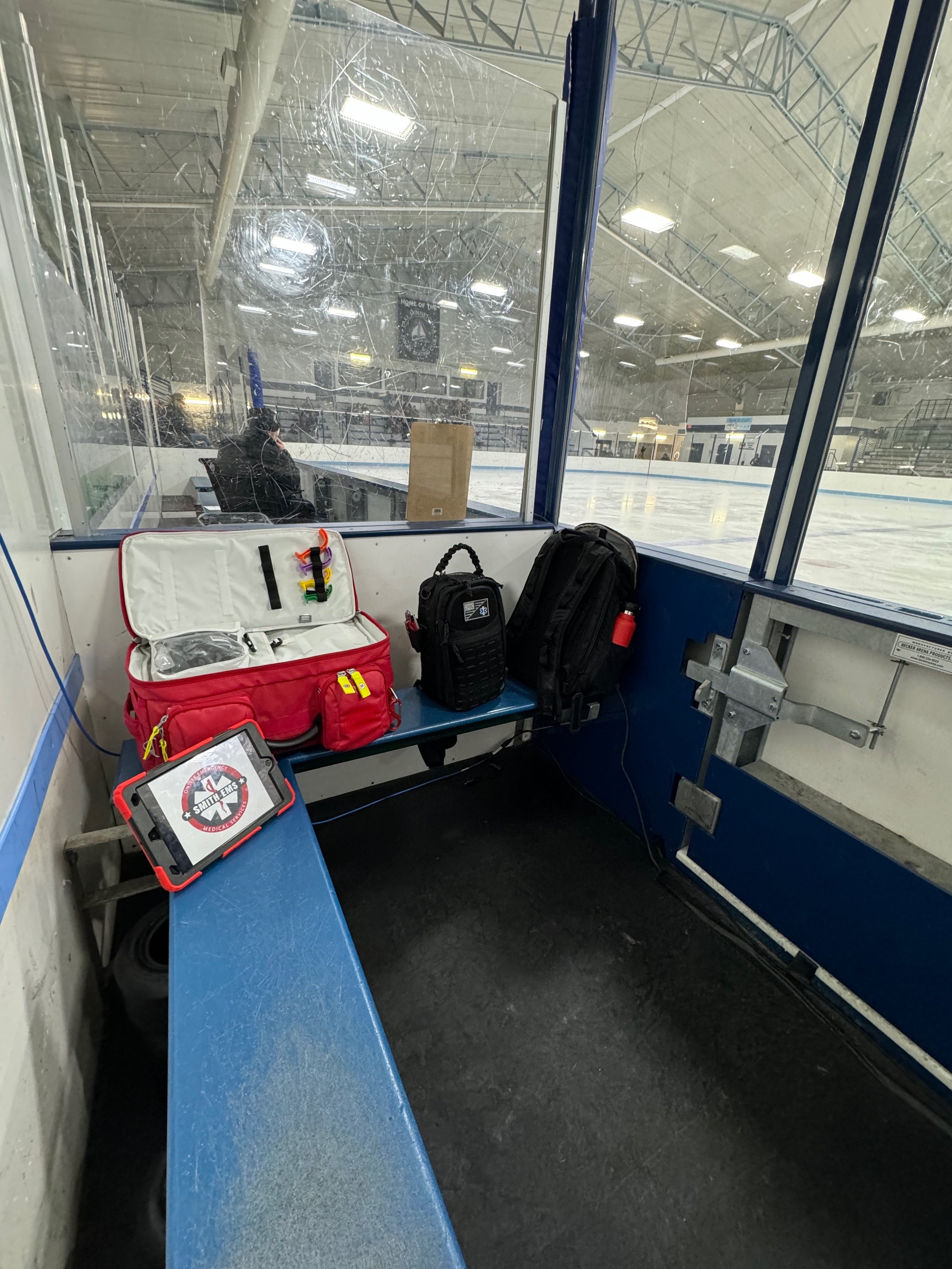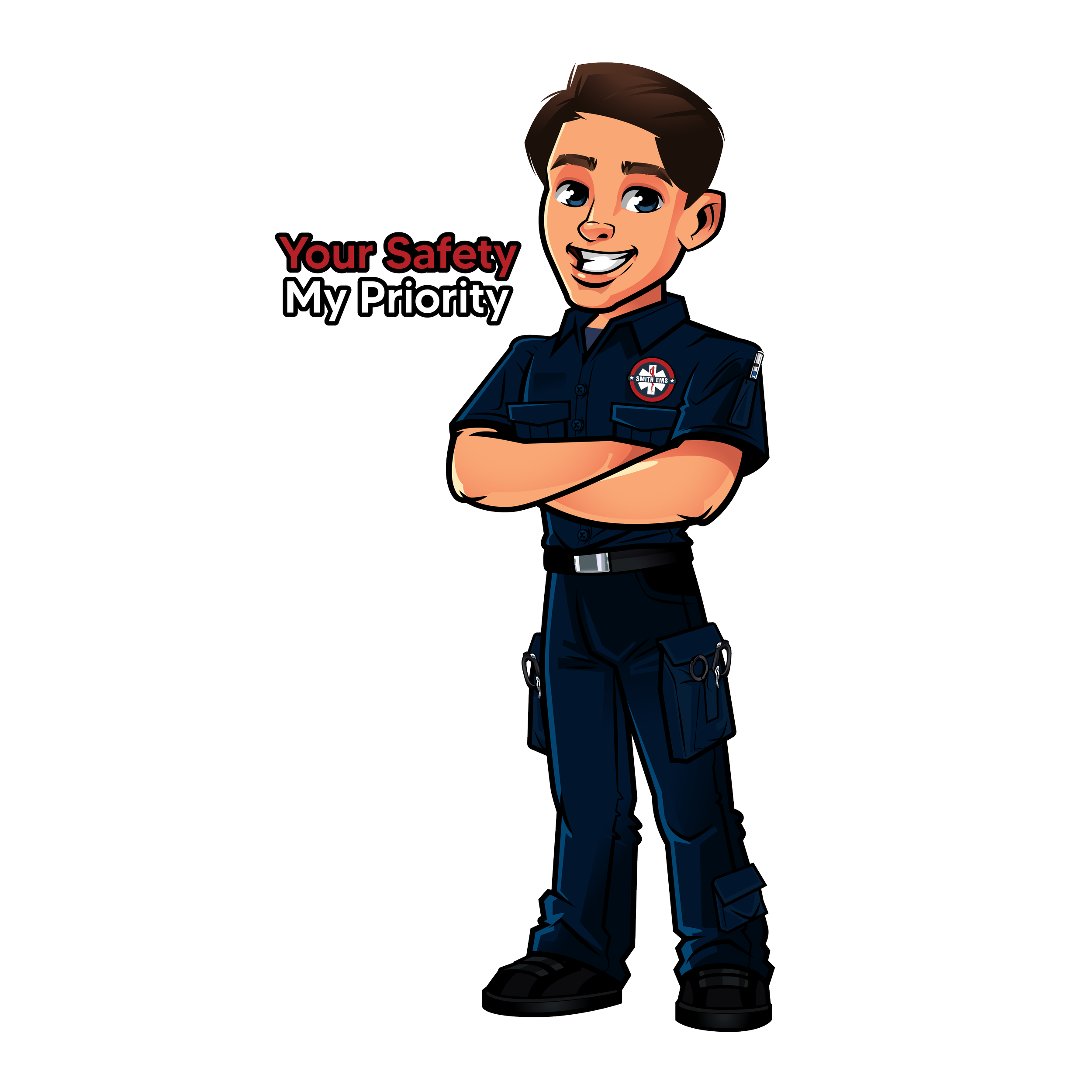Hockey Tournament Safety Planning: Your 6-Month Road Map
Planning a hockey tournament is a multi-step process requiring careful coordination, proactive safety measures, and seamless execution. While this roadmap outlines the ideal planning process over six months or more, it’s important to note that timelines can vary significantly. At Smith EMS, we’ve partnered with tournaments booked anywhere from 12 months in advance to just a few weeks—or even days—before puck drop.
What sets Smith EMS apart is that its team is composed not only of skilled sports medics but also personnel with extensive experience in tournament operations, including reffing, timekeeping, and tournament directing. This unique combination of medical expertise and hockey event knowledge allows Smith EMS to provide tailored safety solutions while understanding the challenges and nuances of running a successful tournament. Whether your planning window is months or weeks, this roadmap will help you ensure a safe, seamless, and memorable event.
Don’t be discouraged; creating a safe hockey tournament doesn’t mean your planning must revolve solely around safety (It simply isn’t practical).
6 Months Out:
plan
Define Tournament Details
Establish tournament format (round-robin, bracket play, etc.) and number of teams.
Pro Tip: Scope out your competition, if other associations near you are hosting a tournament of the same level, aim to host yours at a different date.
Confirm dates and secure a venue, ensure there are adequate allowances for ice time, dependent upon the number of teams you’ll be hosting.
Develop a preliminary budget, including costs for ice time, officials, medical staff, and other essentials like trophies, medals, and apparel.
Assemble Key Personnel
Recruit a tournament planning committee. Look to your association board to establish a strong foundation of knowledge and expertise.
Establish an onsite emergency medical services partnership. Look for medics with experience working sporting events, and a crew that’s ready to serve your team.
Dependent upon your tournament sanctioning, and location, this may be a requirement to have at the rink.
Assign the roles:
Team Registration~Committee member responsible for recruiting teams to join the tournament.
Weekend Operations~Committee member responsible for keeping the games running smoothly. Keep in mind that this person ideally will be present for the weekend in it’s entirety.
Safety Planning~A committee liaison from Smith EMS can take this off your plate, to allow you to focus on building an enjoyable hockey tourney.
Hospitality Coordinator~Committee member responsible for recruiting vendors and maintaining a hospitable environment for players, fans, and staff alike.
Volunteer/Staffing Coordinator~Committee or Board member responsible for organizing volunteers for weekend roles such as running the GameSheet, operating the Score Board, or handling crowds. Additionally can serve as the point person for external communication with 3rd party staff, such as medical, officials, and more.
4 months out:
Refine
Solidify Registration and Marketing
Open team registrations and promote the tournament through local hockey organizations and social media. For in-season youth tournaments, this is typically done May or June
Set deadlines for team sign-ups. This will allow you to edit ice times and prepare potential matchups in advance, knowing how many teams will be in attendance.
Create a tournament newsletter for each invitational you’ll be hosting. When registering teams, invite team managers to add parent emails to this list (You’ll use this list to send out updates, vendor notes, and request feedback).
Secure sponsors to offset costs and enhance the event experience. Explore local organizations that have previously expressed interest in partnering with your hockey program (Locate hotel options for out of town teams, consider creating a select hotel partnership, requiring teams to book with your designated partner).
Review Safety Procedures
Call with your EMS team to review tournament-specific needs, including injury trends and response protocols. This is a great time to review any major incidents that happened in previous years and establish plans for improved response.
Begin sourcing medical supplies for the event’s medical station (wound care, splints, wraps, etc).
When working with Smith EMS, this step will be handled, all you need is ice and an AED.
Communication Channels
Establish a communication plan for staff, medics, and volunteers.
Smith EMS will take this off your plate and provide our walkies, including training for key staff on incident communication on tournament weekends.
2 Months out: finalize
Confirm Team Logistics
Finalize team rosters and schedules.
Create and post tournament rules to the tournament website (Consider adding a note requiring injured players to be cleared prior to returning to play. Another option is to add a section noting for coaches to wait until a medic or ref lets them onto the ice).
Medical Station Setup
Collaborate with your EMS partner to map out the best location for the medical station.
Confirm that medics will have clear visibility and easy access to the ice and other high-traffic areas.
Optional: Staff Safety Training
This step is tailored to tournament companies that work numerous tournaments throughout a given year with the same staff at each event. Typically this is not realistic for youth hockey association boards.
Conduct training sessions for tournament staff and volunteers on emergency protocols.
Include evacuation drills and incident reporting processes in the training.
1 month out:
ensure
Host a Final Venue Inspection
Walk through the venue with your EMS team to confirm readiness.
Identify AED locations, nearest ER, Urgent Care, and other key locations.
When working with Smith EMS, you can consider this step done. If we’re not familiar with a venue, our staff will ensure complete readiness.
Print Marketing
Nowadays many tournaments have opted for a solely digital point tracking platform and bracket system. Consider differentiating yourself by posting posters with tournament brackets and team points across the venue in large font. You’ll want to send these to get printed 1 month in advance.
Distribute Materials
Share schedules and team rules with all families.
Send out any vendor advertisements for pre-order/registration to your tournament newsletter. (Typically for items such as apparel or photography).
Promote Awareness
Send reminders to teams, sponsors, and vendors about important dates and details.
Share a pre-event checklist with participants (equipment, travel, hotels, waivers, etc).
Share Schedules with Vendors
Email schedule in spreadsheet format to Gamesheet (if your tournament is using them).
Communicate with vendors on the tournament schedule, confirm their planned hours to be onsite.
1 week out: execute
Team Check-Ins
Confirm team arrivals and any last-minute changes to rosters or schedules.
Review safety protocols with team managers and coaches.
Print Signage
Create and post QR codes for Gamesheet, Locker Room Assignments, and Schedules. This allows you to update throughout the event, and lets spectators scan with their phones.
EMS Coordination
Confirm your EMS team to review schedules, station locations, and response plans.
Provide medics with a list of event contacts and any anticipated safety concerns.
For events expecting high numbers of patients, Smith EMS offers custom patient transfer sheets that are customized to your association or tournament. These include key information regarding nearest ER, Urgent care, and Orthopedic care locations as well as their associated hours.
Test Communication Channels
Ensure radios or apps are fully operational for real-time communication during the tournament.
game day
Day-of Operations
Ensure medics are visible, active, and patrolling key areas as needed.
Monitor crowd management and venue flow to prevent hazards.
Do what tournament directors do best: Solve problems as they arise!
Incident Response
Trust me when I say, you don’t want to worry about what to do if a player goes down on the ice incessantly. Let our team’s qualified sporting event medics provide you with peace of mind at each game.
Communicate with medical staff about any needed tournament safety improvements or changes.
Post Tournament: Review & Improve
Debriefing and Feedback
Host a debriefing session with tournament staff, volunteers, and EMS personnel (Typically after a tournament season, but can be done after each tourney).
Send out an email to your newsletter with a tournament satisfaction survey (Inquire on quantitative factors such as overall tournament enjoyment, willingness to recommend to a friend, and likeliness to register the next year. Incorporate a variety of qualitative questions, offering open-eneded responses such as what could be improved? What aspect did you enjoy most? What’s something you’d add to encourage a more engaging tournament atmosphere? etc).
As your tournament partner, Smith EMS will share custom feedback questionnaire templates upon request.
Incident Analysis
Analyze medical incidents to assess response times and outcomes.
Update safety plans based on findings to improve future tournaments.
Celebrate Success
Thank teams, sponsors, and staff for their participation in creating a successful event.
Share highlights from the tournament on social media to build excitement for future events. Tag your sponsors, teams, and other staff who played key roles to encourage reposts.
By following this roadmap, you can ensure your tournament is well-organized and safe, regardless of your planning timeline. Partnering with Smith EMS means working with a team that not only provides professional medical services but also brings firsthand hockey event experience to the table—helping you focus on delivering a memorable tournament while leaving safety in trusted hands.
Signed,
Sports Medic Sam
Reach out at: sam@smithems.com!










